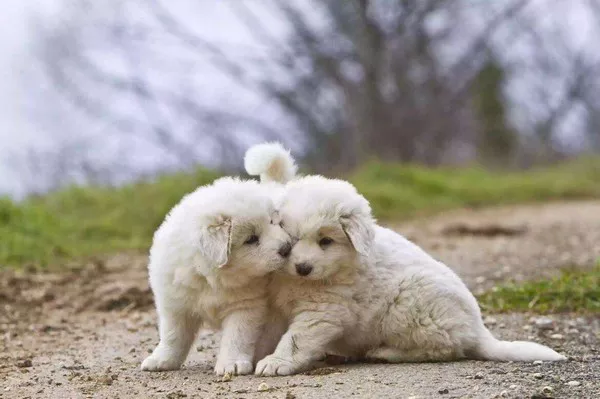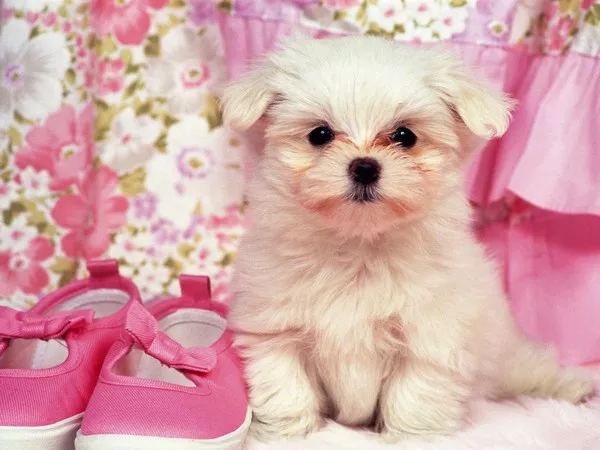The Chow Chow is a breed steeped in history and intrigue, known for its distinctive appearance and unique personality. Originating from China, this breed stands out with its lion-like mane and distinctive blue-black tongue. But within the world of Chow Chows, there is more to discover than just their famous appearance. This article explores the different types of Chow Chows, their characteristics, and their living habits, providing a comprehensive overview of this fascinating breed.
Breed Characteristics
Physical Appearance
Chow Chows are easily recognizable due to their unique physical characteristics. One of the most distinguishing features of the breed is its dense, double coat, which gives them a lion-like mane. This coat can come in various colors, including red, black, blue, cinnamon, and cream. The fur is thick and stands out from the body, contributing to the breed’s robust and powerful appearance.
Another notable feature is the Chow Chow’s distinctive blue-black tongue. This unusual trait is one of the breed’s most defining characteristics and is a key factor in identifying a true Chow Chow. Their eyes are almond-shaped and dark, giving them a keen, expressive gaze. The breed’s face is flat with a short muzzle, and they have a characteristic scowl that adds to their dignified demeanor.
Size and Build
Chow Chows are medium-sized dogs, with males typically weighing between 55 to 70 pounds and females ranging from 45 to 60 pounds. They have a solid and compact build, with a height that usually ranges from 17 to 20 inches at the shoulder. Their bodies are square in proportion, giving them a sturdy and balanced appearance.
Temperament
Chow Chows are known for their independent and reserved nature. They are often described as aloof and can be quite selective about their social interactions. While they are loyal and protective of their families, they may be reserved or even wary of strangers. This breed requires proper socialization from a young age to ensure they grow up to be well-adjusted and confident adults.
Despite their somewhat standoffish demeanor, Chow Chows are known to be loving and affectionate with their families. They form strong bonds with their owners and can be quite playful and engaging in familiar settings. However, they are not always the most outgoing dogs, and their social interactions may be more subdued compared to other breeds.
Types of Chow Chows
Standard Chow Chow
The Standard Chow Chow is the most common type and is recognized by most kennel clubs around the world. This type adheres to the breed’s traditional appearance and characteristics, including the distinctive coat, blue-black tongue, and square build. Standard Chow Chows can be found in a variety of coat colors, and their appearance is often characterized by a thick mane and a tail that curls over the back.
Standard Chow Chows are known for their overall health and stability. They are the type most frequently seen in dog shows and competitions, as they closely follow the breed standards set by organizations such as the American Kennel Club (AKC) and the Kennel Club (KC) in the UK.
Miniature Chow Chow
The Miniature Chow Chow is a smaller version of the Standard Chow Chow. While not officially recognized as a separate breed by major kennel clubs, this type of Chow Chow is popular among enthusiasts who prefer a smaller dog with the same distinctive characteristics. Miniature Chow Chows are bred to be smaller in size, typically weighing between 30 to 45 pounds, but they maintain the same lion-like mane and blue-black tongue as their larger counterparts.
Despite their smaller size, Miniature Chow Chows exhibit the same traits and behaviors as Standard Chow Chows. They are known for their independent nature and can have similar grooming needs. However, potential owners should be cautious about the health implications of breeding for smaller size, as it can sometimes lead to genetic issues.
Long-Haired vs Short-Haired Chow Chow
While not officially recognized as separate types of Chow Chows, the distinction between long-haired and short-haired varieties is notable among enthusiasts. Long-haired Chow Chows are those with the traditional dense, fluffy coat that requires regular grooming to maintain its appearance. This coat is one of the breed’s most defining features and adds to their lion-like look.
See Also: Why the Chow Chow Can Be Dangerous?
Short-haired Chow Chows, on the other hand, have a less dense coat that is more manageable but still retains the breed’s distinctive appearance. This variation is less common and not as widely recognized but is often preferred by those who seek a Chow Chow with lower grooming requirements. The short-haired variety still possesses the blue-black tongue and the characteristic scowl of the breed, but their coat is shorter and less voluminous.
Living Habits and Care
Grooming Requirements
Chow Chows, regardless of type, have high grooming needs due to their thick double coat. Regular brushing is essential to prevent matting and to keep their fur in good condition. For Standard and Long-Haired Chow Chows, daily brushing is recommended to manage their dense undercoat and to keep their mane looking its best. Bathing should be done as needed, but over-bathing can strip the coat of its natural oils.
Miniature and Short-Haired Chow Chows require less frequent grooming compared to their long-haired counterparts. However, they still benefit from regular brushing to keep their coat healthy and to reduce shedding. The blue-black tongue of the Chow Chow should also be checked regularly for any signs of health issues, and their dental care is crucial to prevent tartar buildup.
Exercise Needs
Chow Chows are not overly energetic dogs and do not require excessive amounts of exercise. They enjoy moderate daily walks and playtime but are generally content with a more relaxed lifestyle. Their exercise needs are manageable, making them suitable for both apartment living and larger homes, provided they get their daily activity.
Despite their relatively low exercise requirements, Chow Chows benefit from mental stimulation and should be engaged in activities that challenge their minds. Puzzle toys and interactive games can help keep them mentally sharp and prevent boredom-related behaviors.
Diet and Nutrition
A balanced diet is essential for maintaining the health of a Chow Chow. High-quality dog food that meets their nutritional needs is important, and portion control is necessary to prevent obesity. Chow Chows are prone to certain health issues, including hip dysplasia and thyroid problems, so a diet that supports joint health and overall well-being is beneficial.
Feeding guidelines should be followed based on the dog’s age, size, and activity level. Treats should be given in moderation, and it’s important to avoid feeding them table scraps or foods that are harmful to dogs. Regular veterinary check-ups can help ensure that their diet is appropriate and that they are maintaining a healthy weight.
Health Considerations
Chow Chows are generally healthy dogs, but like all breeds, they are prone to certain health issues. Regular veterinary care and a healthy lifestyle can help manage and mitigate these risks. Common health concerns in Chow Chows include:
Hip Dysplasia: A genetic condition where the hip joint doesn’t fit into the hip socket properly, leading to arthritis and pain. Regular check-ups and a diet that supports joint health can help manage this condition.
Thyroid Problems: Chow Chows can be prone to hypothyroidism, a condition where the thyroid gland doesn’t produce enough hormones. This can lead to weight gain, lethargy, and skin issues. Regular veterinary screenings are important for early detection and management.
Eye Issues: Chow Chows are also susceptible to certain eye problems, including entropion, where the eyelids roll inward, causing irritation. Regular eye examinations can help identify and treat such conditions.
Socialization and Training
Early socialization is crucial for Chow Chows to ensure they grow up to be well-adjusted adults. They should be exposed to a variety of people, animals, and environments to help them develop confidence and reduce the likelihood of behavioral issues. Positive reinforcement training methods are recommended, as Chow Chows can be independent and may require patience during training sessions.
Consistent and positive training techniques will help them learn basic commands and acceptable behaviors. It’s important to establish clear boundaries and to use rewards-based training to encourage good behavior.
Conclusion
The Chow Chow is a unique and captivating breed, known for its distinctive appearance and independent personality. While there are variations within the breed, including Standard, Miniature, Long-Haired, and Short-Haired types, all Chow Chows share common traits that define the breed. Their lion-like mane, blue-black tongue, and reserved nature make them a distinctive choice for dog lovers.
Understanding the different types of Chow Chows, their grooming needs, exercise requirements, and health considerations is essential for anyone considering adding one of these remarkable dogs to their family. With proper care and attention, a Chow Chow can make a loyal and loving companion, adding a touch of elegance and distinction to any household.
Related Topics:
























